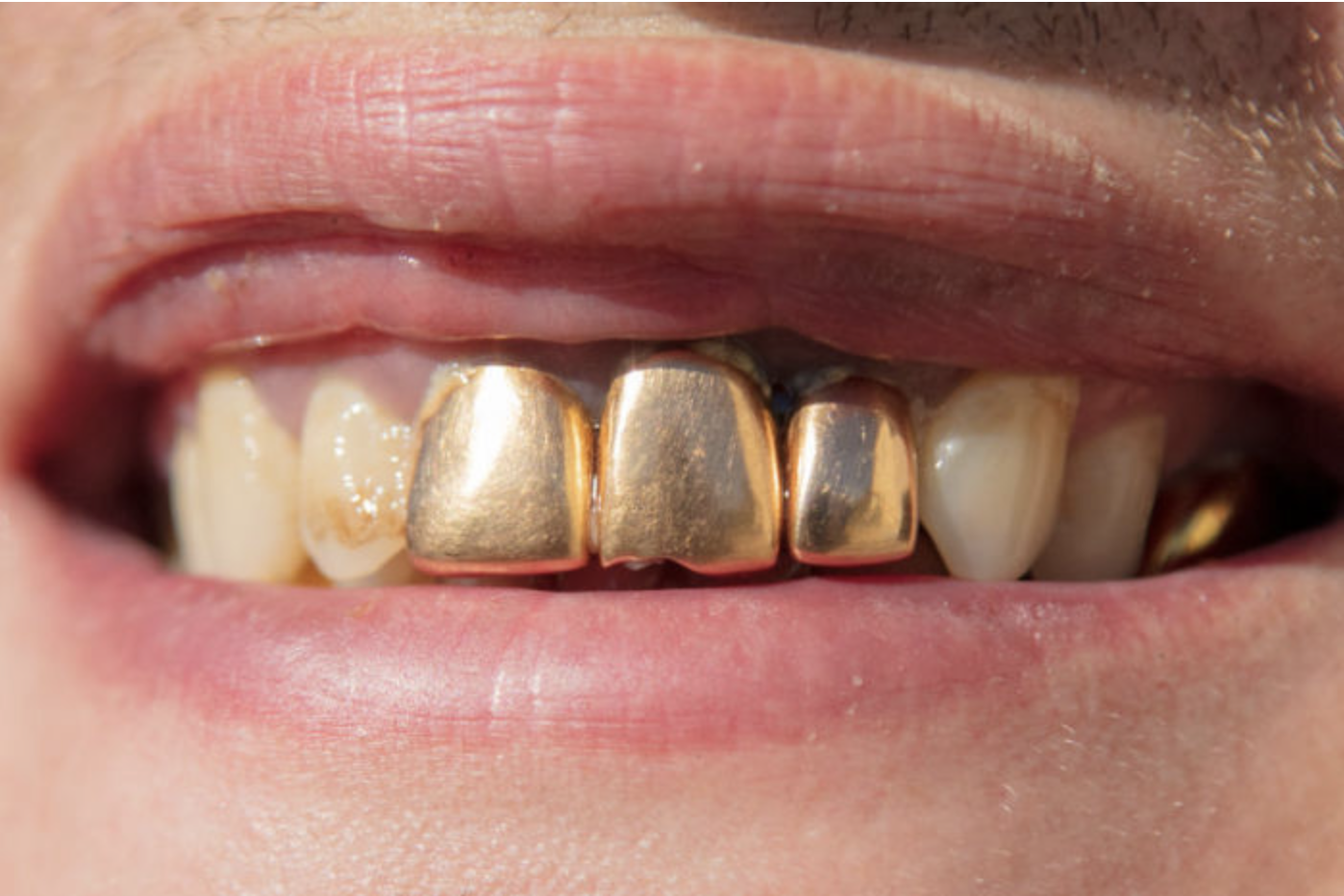I’m sure everyone has seen or heard of the gold tooth. We previously wrote about eating gold, so talking about another way to put gold in your mouth seems quite a logical follow up.
But before you think about getting your goldsmith to contact your dentist and create a 24 Karat gold tooth, please read on to find out more about this interesting topic.
As mentioned previously, gold is rather inert – meaning it doesn’t react with most elements. Hence early dentists found it suitable for gold to be used as a crown.
However, gold on its own is too malleable to be used in the mouth. It won’t stand up to the bites you take off the meat, or worse still, the grinding of teeth. Thus dental gold is always some sort of alloy. There are 3 broad types of dental gold: precious metal; semi-precious metal; and non-precious metal.
Precious metal types have at least 60% high noble metals with a minimum of 40% gold.
Semi-precious metal types have a minimum of 25% precious metal including gold.
Non-precious metal types have less than 25% precious metal, and are usually a blend of chromium, nickel and gold.
The more noble metals there are in the mix, the lower the chance of it corroding or oxidising in the mouth as noble metals don’t react to the acids in the mouth.
While gold on its own is too malleable, it gives this property to its alloy, making it more resistant to chipping or breakages from biting or grinding of teeth.
Combining its resistance to breakages as well as corrosion, it is common to see gold crowns lasting up to 50 years! It may outlast the wearer in these cases.
Source: https://www.drericmorrison.com/
#goldtooth #gold
